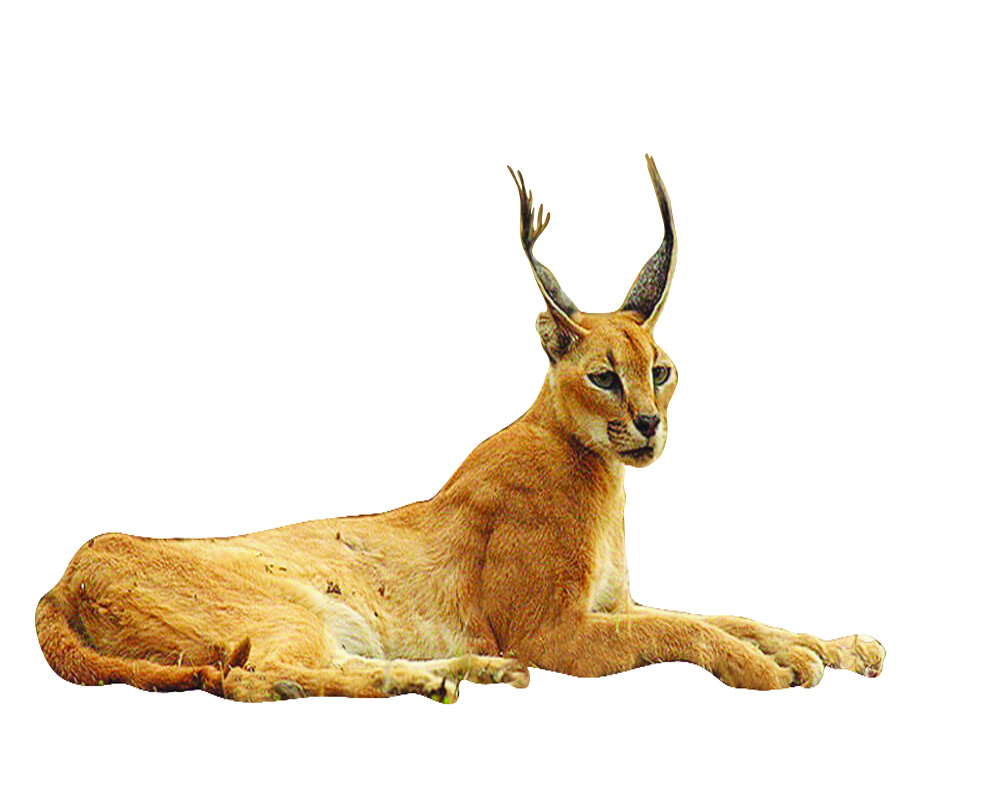Tha caracal, a medium size wild cat with long black tufted ears, which is found in some parts of Rajasthan and Gujarat, has finally caught the attention of the Government. Fearing that this species might not survive for long, the Union Environment Ministry has now brought it into the ambit of the critically endangered species programme for taking up its conservation.
With the inclusion of this species from the cat family, now there are a total 22 wildlife species, including snow leopard, bustard (including floricans), dolphin, hangul, nilgiri tahr, marine turtles, dugongs to name a few under recovery programme for critically-endangered species in the country.
Though the International Union for Conservation of Nature (ICUN) has not listed these species as endangered as there is a huge population of caracal cats present in the African continent. In India, their number has gotten very low and hence they are considered endangered species.
They are a rare species of the cat protected under Schedule I of Wildlife (Protection) Act, 1972 found only in Gujarat and Rajasthan.
In fact, during the 2018 tiger census conducted by the National Tiger Conservation Authority (NTCA) just one caracal was photocaptured only in one camera trap from out of 150 camera traps locations for the entire session in Ranthambhore in Rajasthan. The location is situated in the north western part of Ranthambhore, this area is dominated with sparse vegetation with thorny scrub, said an official from the NTCA.
Similarly an incident of caracals attacking a man in Mirzapur has been documented by Bombay Natural History Society in its book “Wild Animals of India” published in 2004.
The official said that the National Board for Wildlife (NBWL) in a meeting in January approved inclusion of the species in the recovery programme which will ensure the species to have a separate conservation programme.
“As per the programme, a population estimation will be done and a study on their habitat so that conservation measures can be taken accordingly,” he said.
The semi-arid region of Kutch is one of only two homes of this cat species in India. According to a research report “Historical and current extent of occurrence of the Caracal in India” by Dharmendra Khandal and Ishan Dhar from Tiger Watch and Goddilla Viswanatha Reddy from Rajasthan Forest Department, the caracals’ presence has been noted in only three States, with just two possible viable populations. These are in the marshy areas of Kutch district, the higher areas closer to Kalo Dungar with grassy scrubland; and in Rajasthan’s Sawai Madhopur, Karoli, and Dholpur districts. In Gujarat 19 sightings were reported, all in Kutch district, and nine of these were authenticated by photographs.
According to the earlier reports, there were around 18 sub-species of caracals present. But, as per the study by Khandal and Dhar, there are only 3 sub-species of caracals present. Historically, the caracal was reported in 13 Indian States in nine out of 26 biotic provinces. Since 2001, caracals presence has been reported in only three States and four biotic provinces, with only two possible viable populations.
“It is possible that the caracal might still be present but underreported in States like Maharashtra, Madhya Pradesh, Uttar Pradesh, and the eastern parts of India. Targeted surveys will be required to further verify and adjust the putative reduction in range size established by this study.
“With the exception of a handful of studies, there has been virtually no contribution to the knowledge of Caracal ecology in India in the 21st century. Surveys on Caracal population size, reproduction, mortality, home range sizes, and prey dynamics are the need of the hour,” said the authors of the study.
























